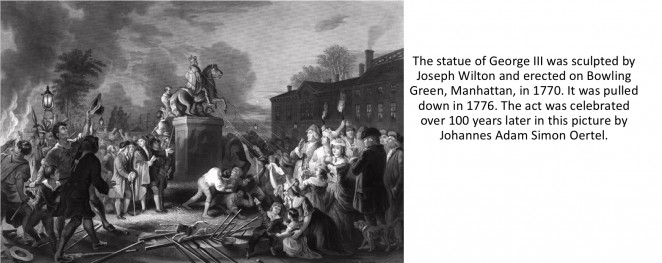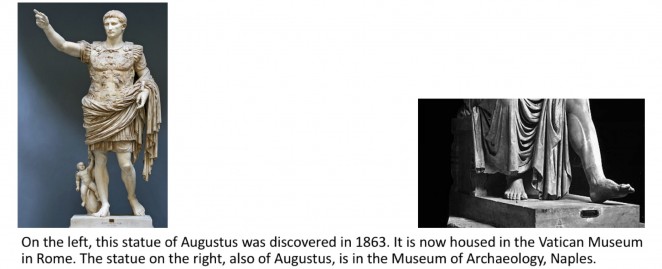Art is communication.
Especially public art. In times gone by, when few could read or write, public monuments were nothing more and nothing less than propaganda. Julius Caesar commissioned statues of himself in armour to remind the citizens of Rome of the wars he’d fought, his many conquests. On the coins he issued, he was shown wearing a crown of laurels. Every denarius minted was a reminder to the entire empire of his achievements.
Soon after he was murdered, a life-sized wax sculpture of him showing the 23 stab wounds was erected in the forum by his followers. Art as news. It started a riot. His successor, Augustus, had himself sculpted standing barefoot. A man of humility. The cherub pulling at his toga was symbolic of his charity and his concern for ordinary people. Caesar’s media plan was for penetration and reach, to remind his audience of the brand and its values. Augustus, by contrast, was launching himself as the first Emperor of Rome. His strategy was an exercise in new product development.
Two hundred years later, Marcus Aurelius had himself cast in bronze on horseback. Larger than life-size, the message now was the emperor is divine. Looking down on them, clad not in armour but a toga, with a gesture of benediction, he is a god bringing peace to his people.

But, as any brand manager knows, ideas have a shelf-life. If it became tradition for the great and the good to put up monuments to themselves, it was equally traditional that those monuments were soon pulled down. Fast forward twelve hundred years from Marcus Aurelius to George III. In New York, on July 9th 1776, when the Declaration of Independence was read aloud to George Washington’s army, the troops marched to Manhattan and pulled down the statue of the British King. They used the lead to make 42,088 bullets for the war against the Crown. That was a declaration of independence too.

From the 16th century on, no self-respecting King or Queen was not painted astride a rearing steed. Emperor Charles V started it all off, commissioning Titian to paint his portrait in 1548. He gave the painter the tightest of briefs. The horse, the blanket, his armour, were all those Charles had used at the battle of Mühlberg. These were the early years of the Reformation and the message was clear. Catholicism will win. The jury’s still out on that one. In 1630, Rubens painted Philip II of Spain. Though Philip had been dead nearly 40 years, it was a statement of support for the monarchy. The King’s size is exaggerated. The soldiers behind him and below him are teeny-weeny mortals. A couple of years later, Velasquez raised the stakes by putting Philip IV not just on a horse but a rearing horse. Superhuman power and control. Get the picture? Napoleon certainly did.

The most portrayed individual in history is the UK’s current Queen, Elizabeth II. She too is immortalised on horseback. In Saskatchewan there is a statue of her sitting side-saddle on Burmese, the horse she rode for 18 years at the Trooping of the Colour. The way she holds the reins, the friendly tilt of the horse’s head, this is an altogether more human monarch. The idea, it seems, is to make it perfectly natural to Canadians that they should have a Queen, even if she is 3,500 miles away. And even if 69% of them would rather have a home-grown head of state. All monumental art is trying to sell you an idea.

But what about art as the expression of opposition? When you take a familiar brand and disparage it? Like Trump? Before the 2016 elections, a group of artists called Indecline put up statues of a nude Trump in New York, San Francisco, Seattle, Cleveland and L.A. Their message to voters was clear. As it turned out, voters chose not to listen. But was it art? Surely the idea was nothing more than a media stunt? As always, the market had an answer. Yes, it said. “The Emperor Has No Balls” is art and it's worth $28,000, which was the price one example fetched at auction in May 2018.

Unsurprisingly, Trump’s idea of himself is very different. It is of a man among equals. In October 2018, he put up a portrait of himself in The White House. There he is, hanging out with former Republican Presidents Reagan, Nixon, Eisenhower and Lincoln. Both Bushes, Eisenhower and Ford look on. The picture has had more than its fair share of mockery. But plenty of other brands do the same every day. Flatter themselves. Still, as Caesar, Augustus, Marcus Aurelius et al still testify, nothing is forever.








